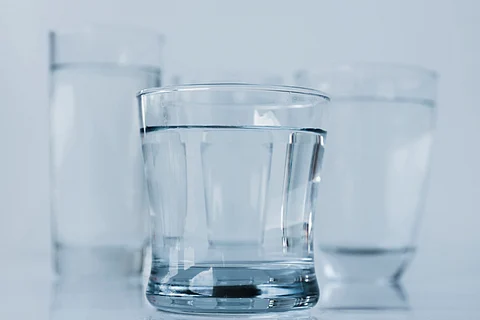
- Topics
- Feature
- Opportunities & Events
- Data
- Hindi Portal
- Topics
- Feature
- Opportunities & Events
- Data
- Hindi Portal

Climate change has worsened water scarcity issues worldwide with over 20 percent of the world’s basins experiencing rapid flooding or declines in water. It is estimated that approximately 2 billion people worldwide do not have access to safe drinking water.
This has put additional stress on already limited freshwater resources, leading to water scarcity in many parts of the world and in India. Deteriorating quality of the available water resources is further adding fuel to fire.
Factors affecting potability of drinking water
Various factors affect the potability of drinking water, including the pH, electrical conductivity, and total dissolved solids informs this paper titled '. Assessment of RO wastewater management and reuse: Concerning households in Gurugram, Haryana, India published in International Journal of Agriculture & Environmental Science.
Higher TDS in water can lead to a number of health problems such as kidney stones, heart diseases, diabetes, and gastrointestinal issues like stomach pain and diarrhoea.
There are various types of water filtration systems such as ultrafiltration, ultraviolet purification, candle filters, activated carbon filters, and reverse osmosis (RO) filtration that can be used to remove TDS from water.
Reverse osmosis filters
The RO filtration system is the most efficient at reducing TDS levels as it has added filtration stages compared to other filters and improves taste and safety, and is more adaptable. It includes a water purification process that uses a semi-permeable membrane to separate water molecules from other dissolved substances.
However, a large amount of wastewater is generated in the process. The average reverse osmosis system generates 3-4 litres of wastewater for every 1 litre of potable water produced, resulting in 75 percent wastage of water.
Studies on management and reuse of wastewater continue to be scanty in India. The paper discusses the findings of a study that aims at exploring RO wastewater management practices in Gurugram city and the reuse potential of this wastewater as a step towards fighting the shortage of potable water in the city.
Gurugram is India's corporate hub and the main sources of freshwater in the city are groundwater, water from the Yamuna river and rainwater, which recharges groundwater.
The southwestern parts of Gurugram district have elevated TDS levels in the water that have increased from 3,011 mg/litre to 5,140 mg/litre between 2016-17 and 2017-18 in the city. Data from multiple households across Gurugram was included in the study.
The study found that:
There was a notable disparity between awareness and practical application in the management and reuse of RO wastewater. Many people were unaware of the environmental implications of RO wastewater and their understanding of effective reuse methods varied significantly.
Major barriers included lack of access to information on appropriate techniques for managing RO reject water. Even in cases where people had some general awareness of the issue, insufficient knowledge and inadequate infrastructure hindered widespread adoption of reuse practices.
Municipal water was the primary source of water for the majority of families, with 85.3 percent of them relying on it for their daily requirements while 14 percent of households used borewell water. The Municipal Water Line supplies water with a TDS of 250 to 300 ppm, which is on the border of the “excellent” and “good” classifications of TDS, according to the WHO. However, 86 percent of the respondents had an RO system in their households.
Out of the respondents with an RO system, only 39.8 percent reused the wastewater, mostly for gardening.
An RO generates wastewater in a 1:3 or 1:4 used water to wasted water ratio. Only 25.2 percent of the respondents were aware of the true amount of water wasted by their RO.
While only 39.8 percent of respondents reused RO wastewater, when asked of the plausible way to store/reuse RO wastewater, 60 percent felt that buckets could be used, 35 percent felt that an additional storage tank could be installed, and 29 percent felt the need for a central plumbing system for collection of wastewater. Over 14 percent of the respondents said that they would implement RO wastewater reuse if there were more technologies available.
An RO wastes three liters of water for every liter of water treated and a person needs 90 litres of drinking water per month. Thus, in RO-equipped homes, 270 litres of water per person are wasted each month. The amount of water squandered grows with the number of families.
Currently, the Bureau of Indian Standards (BIS) has issued a standard, which states that no domestic water purification system can be manufactured, imported or assembled without an ISI Standard Mark or a BIS Certification. This improves quality of RO systems throughout India. However, there is a need for increased awareness of this problem through focused teaching programs and public awareness campaigns to advance environmentally friendly water usage habits.
Promoting the reuse of RO wastewater has the potential to drastically cut down on water wastage, which would help Gurgaon manage its water resources more responsibly as the city deals with a growing shortage of water. New, technological solutions which can easily be implemented by the public are also important, argues the paper.